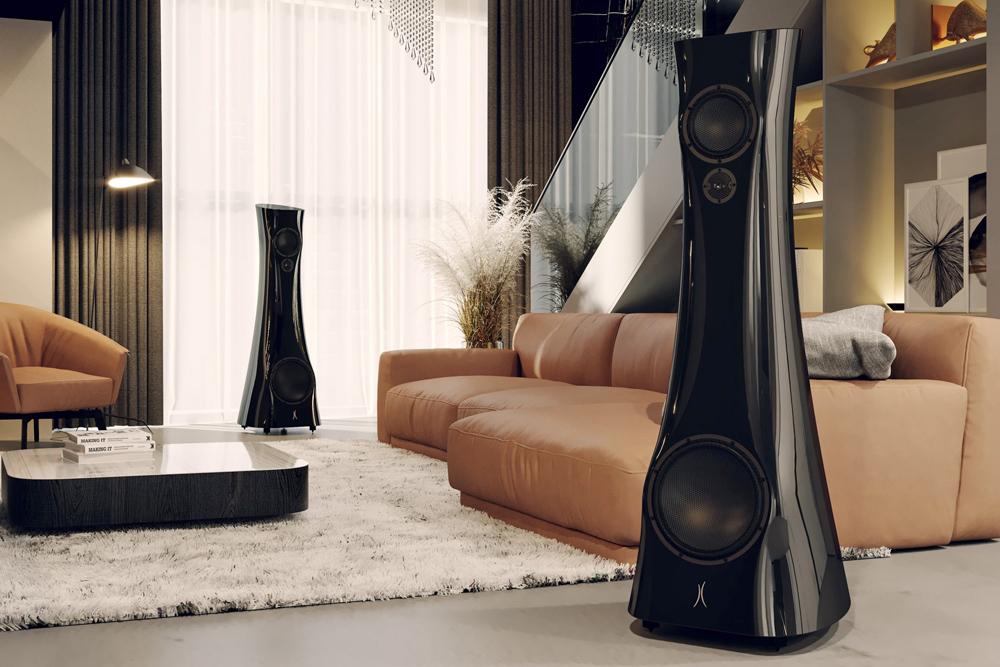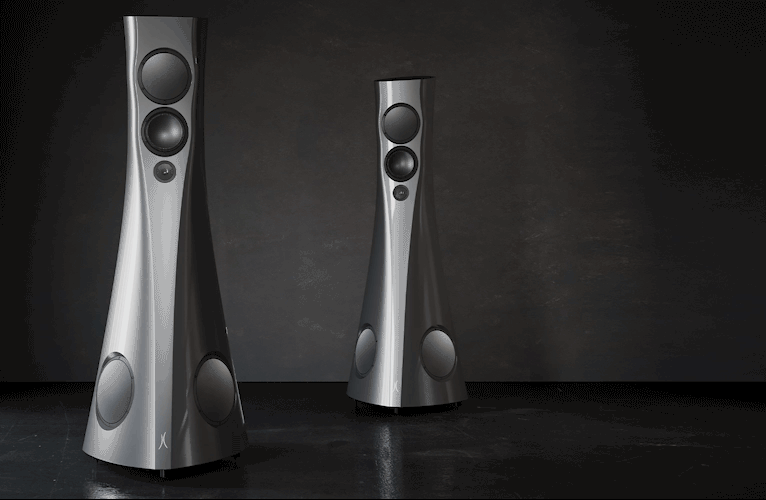“He who sows the wind will reap a storm” (kes külvab tuult, lõikab tormi) asserts an Estonian proverb. That country’s Estelon, producer of uniquely-styled high-end loudspeakers, has been sowing… and sowing. And the company is reaping… while ripping through the high-end space like a hurricane. Category 5. In a relatively short time, Estelon has raised its profile to a helluva-a-high perch. Deservedly so too. It produces highly desirable and uniquely styled speaker systems which, I’d wager, have raised the eyebrows of the industry’s most robust high-end brands. The winds are about to blow a gale and the impressive X Diamond Mk II heralds the calm before the storm.
Lyrically Lithe
Can a loudspeaker be beautiful? What are the limitations inherent in the ratio between purpose and design? Of course, the constraints of function dictate the placement of transducers – and crossovers – into a cabinet able to appropriately house them in order to provide the suitable internal volume and launching platform for sound propagation. In dynamic driver loudspeaker design, those physical parameters are set and non-negotiable. What you’re left with is, effectively, a box which may somewhat integrate into its environment. At best, said speaker may present a pleasingly attractive design as a result of its wood veneer or paint finish.
No mere rectangular box, Estelon’s X Diamond Mk II nails it. It’s a unique embodiment, an organic, svelte figure… a form of statuesque beauty. An alluring provocateur with a seductive musical promise.
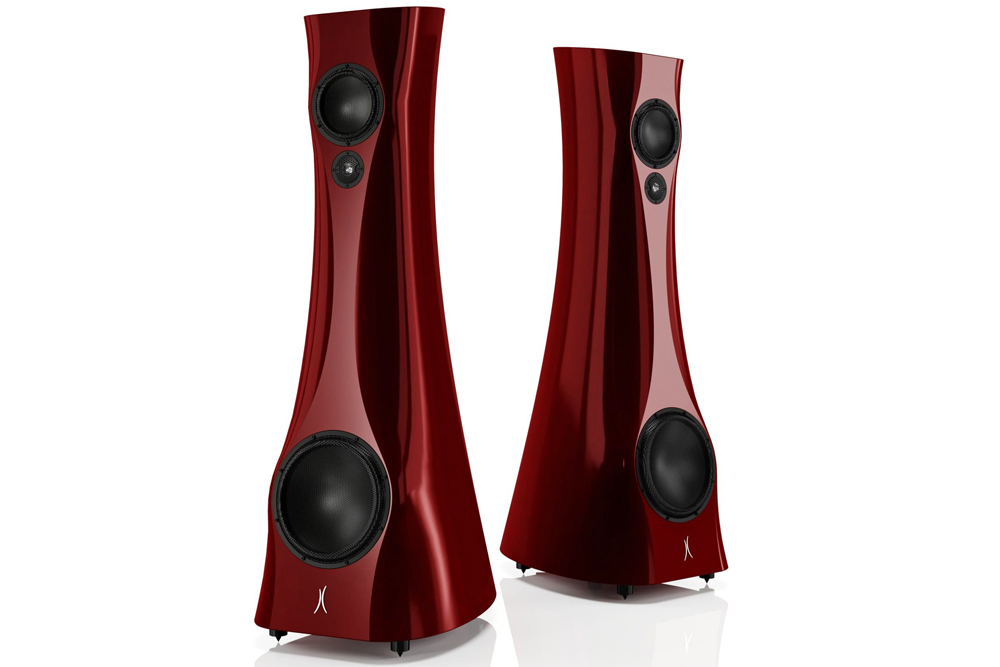
Yes, as an assertion of design, there are few loudspeakers as striking, or which make as pure and as powerful a visual proclamation, as an Estelon loudspeaker. Be it a model at the entry-level into the company’s universe or a statement piece at the very highest echelon. And at the very top of Estelon’s ‘Classic’ line, we find the arresting X Diamond Mk II.
Sure, modern materials, improved manufacturing techniques and the adoption of high quality finishing have allowed contemporary loudspeaker designs to be, for the most part, reasonably attractive, functional objects befitting their often predominant place in our living environment.
Estelon’s X Diamond Mk II is on another level. Interestingly, an impromptu (and unprecedented) eight-and-a-half hour long listening session with several battle-hard audiophiles netted a majority who loved the design form yet, still, a more conservative guest was of the opposing view. But it was an overwhelming majority, four-to-one in this small sampling, who were delighted with the design. The result for sound quality appreciation was a one hundred percent strike rate, by the way.
While the X Diamond Mk II’s aesthetic is obviously the talking point upon first seeing them in the flesh (or in the composite), like all Estelon speakers, there’s solid acumen associated with the engineering required for their production.
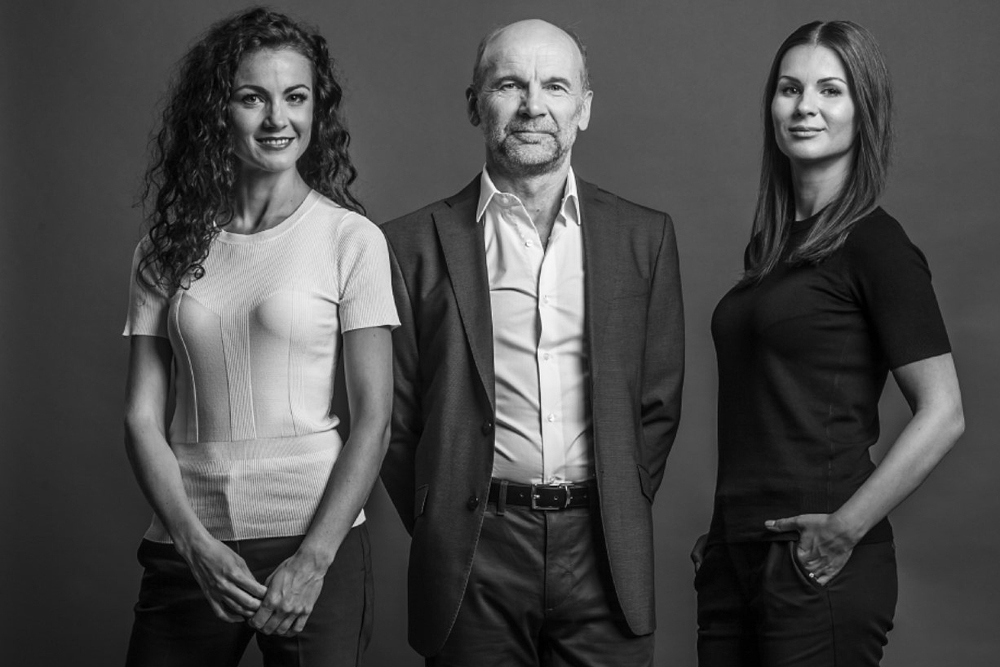 Alfred Vassilkov with daughters Alissa Vassilkova (CEO) & Kristiina Vassilkova (MD)
Alfred Vassilkov with daughters Alissa Vassilkova (CEO) & Kristiina Vassilkova (MD)
Estelon’s Founder and Chief Engineer Alfred Vassilkov has a preference for Accuton drivers (a German brand under the Thiel & Partner umbrella) which are also the choice of many of high-end audio’s players. In fact, Vassilkov uses these transducers across all the company’s models barring the very entry point YB, itself a rather delicious-looking small floorstander endowed with upper-tier drivers from Scan-Speak and SEAS.
In the 3-way X Diamond Mk II, we’re looking at a 280mm (11 inches) ceramic sandwich bass driver (a Kevlar composite with honeycomb core) placed towards the bottom of the enclosure in order to capitalise on floor reinforcement. As the cabinet tapers down towards the middle, it then angles outwards around its four sides, to a wider and deeper form allowing a much larger internal volume for the purpose of bass extension and adequate driver loading. It’s a rear-ported reflex design with a wide and flared exit which is split internally via a partition/slot, presumably in order to null-out chuffing, or exit air turbulence.
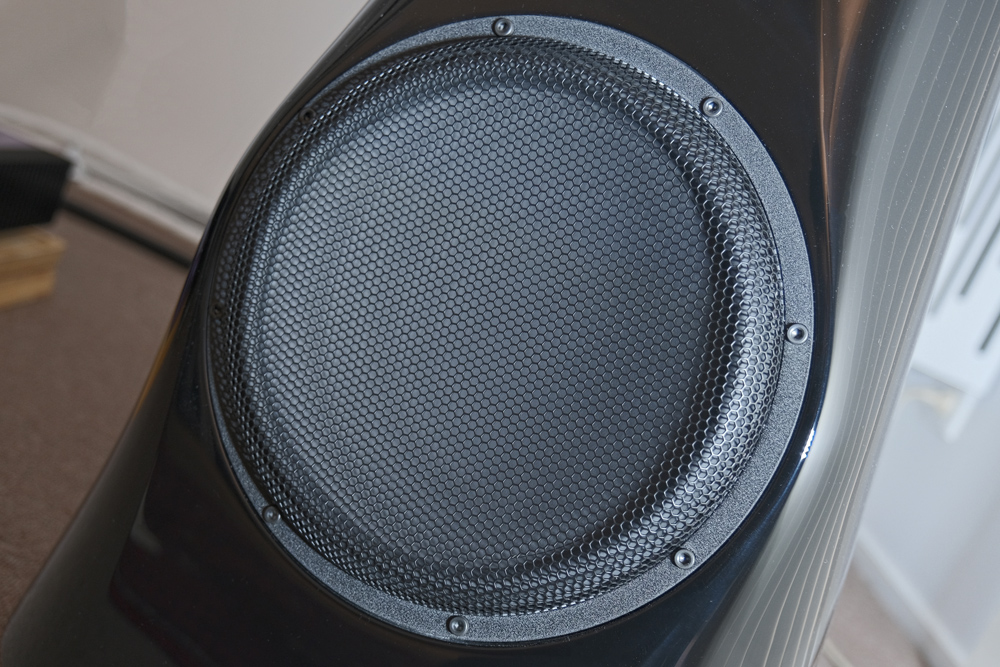
Midrange frequencies are supported via a 173mm (7 inches) ceramic driver which is unusually (but by no means uniquely) positioned above the tweeter towards the top of the cabinet. There, again the enclosure widens to provide a larger internal volume. The ceramic drivers have a super lightweight diaphragm and feature massive underhung magnet structures. In these current production ceramic drivers Accuton has resolved the previous generations’ need for a damping anti-resonance strategy (at one stage, a simple twin cut-out/perforation) in order to deal with cone break-up.
Finally, the tweeter is positioned in close proximity to the midrange driver – their mounting plates are very close to touching. This is a good thing in terms of precisely coalescing the drivers’ combined output with the potential result being a very coherent sonic presentation. Said tweeter is Accuton’s 25mm (1 inch) chemical vapour-deposited diamond inverted (concave) diaphragm unit also featuring a Finite Element Analysis (FEA) optimised underhung double neodymium magnet motor driving a titanium vented voice coil former. The tweeter is housed in its own dedicated sub-enclosure. Of course, the tweeter's weight to stiffness ratio is just about unmatched due to the inherent combination of hardness and featherweight of the diamond diaphragm. Accuton claims the break-up mode is up there towards the 100 kHz point and way beyond the Estelon-quoted 60 kHz extension accorded to the X Diamond Mk II – in other words, well outside the response band’s boundaries.
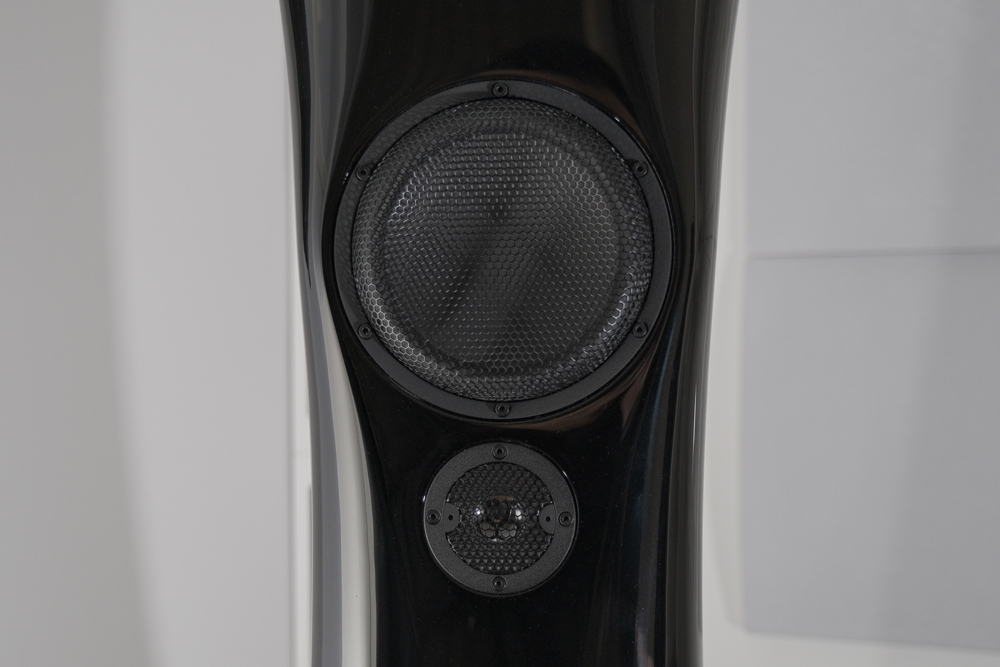
Estelon states the X Diamond Mk II’s crossover circuit is newly designed for the speaker. It’s a mix of third-order for the woofer and mid-woofer and second-order between mid-woofer and tweeter. Each crossover is tested exhaustively and the company claims the components are “among the absolute best available”. The interface between the crossover network and the drivers is via the highly-regarded Kubala-Sosna cable from the USA.
I approached Alfred Vassilkov with a view to receiving further insights into his design ideologies. I started-off by asking about the use of Accuton drivers exclusively through the majority of Estelon’s loudspeaker designs.
Accuton offers top quality hard membrane drivers. Our philosophy regarding the X Series is to not compromise in neutrality and honesty of the presentation. The driver selection starts from our vision. When there is something that fits that vision in the existing model range, we might pick that. When no such driver exists, we will pursue a custom design. Some of our models use Accuton drivers with custom TS parameters or even custom-designed motor and voice coil construction. The drivers of X Diamond Mk II are standard.
I followed by asking re the optimisation of the mix of 2nd-order and 3rd-order crossover filters and the desired target and any specific aspects of the crossover design which presented challenges.
Transducers are complex electro-mechanical devices. Their placement, the enclosure properties, and the electrical filters contribute to the acoustical output. The woofer of X Diamond Mk II uses approx. 3rd order low pass filter to complement the natural roll-off of the mid-woofer performing in a closed box. The challenge with the 3-way speakers is to make the drivers sound like one. Often the mathematically derived ‘’ideal’’ filter does not offer the best sound; it can result in problems from timber integration, to wrong emphasis to some area in frequency response (despite measuring linear), or disjointed sound (lacking coherence, or sounding boring and lifeless). We design the least complex filters while still striving for correct timing, phase, and magnitude response, with minimal parts to retain the life-like nature of the music. The components selection, the placement, the vibration damping, the wiring and connection techniques will achieve the desired result. Therefore, the filter orders are more of a guideline for our goal which is the best possible sound.
I wondered whether the final voicing of Estelon speakers – and the X Diamond Mk II in particular, obviously – was the result of a single person's discernment or the task of a panel or group.
Listening sessions are our most important tool to evaluate the end result of the sound. We test the speakers with different setups (amplifiers, sources, cables, spikes) with a wide selection of music. During these listening tests, we usually make the final decision on which filter components to use, adjust the damping, change the balance, or even fully rework the filters. Voicing and tuning of the sound is basically done by our engineers, however, during the development, several key people take part in the assessment of the sound to cover as many different tastes and perspectives as possible.
In light of the extensive listening sessions, most likely by a consistent member panel, I asked whether there was an Estelon 'House Sound'…
Yes and no. Yes, in the sense that Estelon speakers can quite easily be picked out blind by the sound. The key property will be the uniform and precise soundstage that can be provided by all our models. No, because the sound is quite neutral and free of colouration. Our aim is to present the music only, and not the speaker "participating" in the performance.
In response to a question I asked purely for my own information regarding the effects of the pandemic, Vassilkov’s response was interesting and worthy of reproducing here.
When the pandemic crisis started, there were uncertain moments. However, since late 2020, we noticed that businesses were getting creative, and they were looking for alternative ways to grow or maintain financial stability. Most companies reacted fast, and they adapted to the new ways of working.
Estelon had a very successful year during 2021 and we don’t believe that it was an effect of the Covid crisis, but an effect of overcoming difficulties, learning, and adapting fast to the new “normal”.
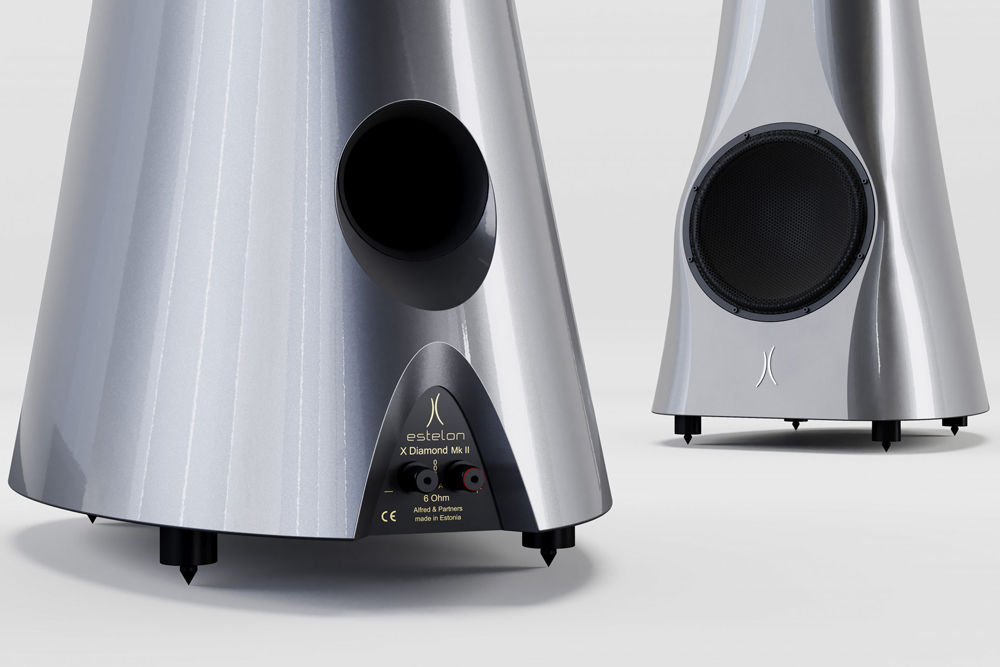
Marble-ous
Coming back to the unique enclosure which itself, along with most of Estelon’s offerings, resembles a fluid ‘X’ shape (very pertinently in the case of this subject), I noted the stiffness of the composite cabinet across its entire surface. Indeed, dull knock thuds was all I got. The cabinet material is a proprietary “marble-based” composite where the hard material is crushed into a fine powder.
This powder is mixed with high-temperature special epoxy to form a liquid composite mixture. The raw curved shape comes out of the mould. The technology to mould the correct shape and to have the properties we want, both acoustical and aesthetical, took several years of engineering and experimentation. The material is very dense, rigid and with good internal damping properties, making a perfect enclosure for the transducers and the filter.
The bespoke sub-enclosure system has been optimised in terms of its internal structure (substantial bracing is used in the bass driver’s sub-cabinet) and volume for the driver it caters to. Yet another sub-chamber is used to house the crossover network in order to isolate the sensitive components from excessive low frequency vibrational distortions. Estelon has carefully assessed damping strategies for the cabinets resulting in a mix of natural and synthetic materials in a mix said to optimise driver performance. The balance of materials was arrived at after extensive measurements and listening tests.
The cabinet’s sweeping arc design, which shapes the ‘X’-like silhouette, is also applied on the front and rear baffles. Curvalicious. Like the spawning of a tryst between Aston Martin and Porsche. Painted by Salvador Dali. The result is a cabinet with no parallel surfaces (even the top panel angles down quite steeply), therefore nulling-out internal standing waves. Further, the front baffle’s curvature aids in acoustically aligning the drivers’ output to coalesce at the listening position. Transient response is also said to be optimised, no doubt also aided by the proximity of the tweeter and midrange driver on the baffle, as I mentioned above.
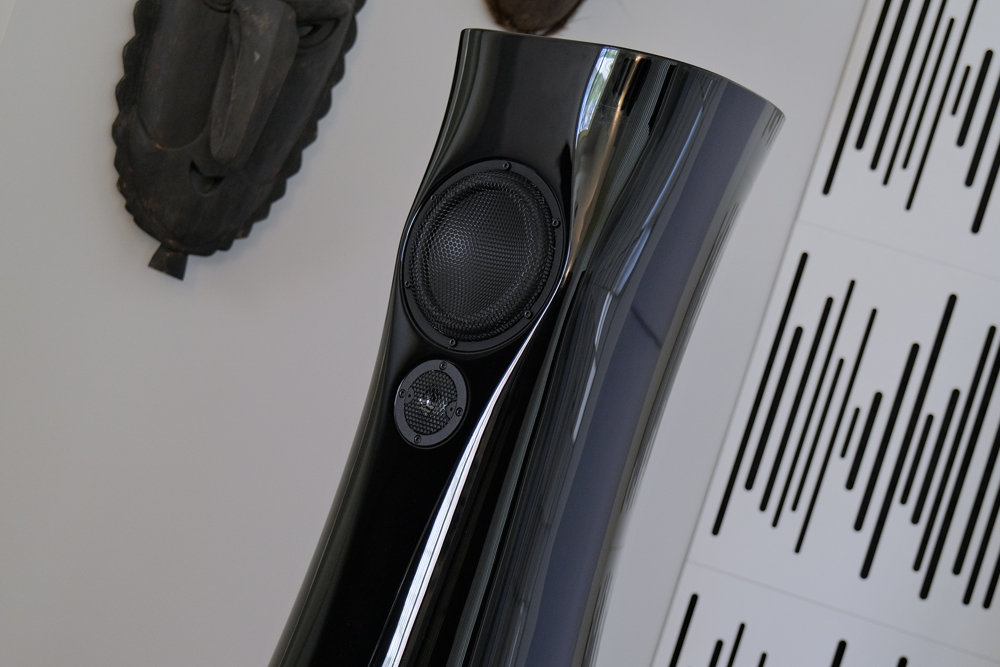
The cabinet’s beauty and its liquid shape is extended further by the sheer excellence in the application of the paint and the high standard of the deep gloss finish. And while the review sample came in a glorious black gloss, there are eight colour options in high quality automotive paints in either gloss or matte options. Custom colour finishes are available on request.
In my room, the interplay between ambient light and X Diamond contours fooled the eye with a mirage of fluid, organically-abstract shapes. Lovely.
Out of their full touring-style roadcase the X Diamonds simply wheel down the in-built ramp. The rollers allowed extensive experimentation in terms of room placement. I found the speakers not excessively fussy, yet careful assessment of placement – given the speakers are rear-ported – provided worthwhile sonic improvements across the bandwidth. Once the position was determined (which ended-up being a few inches forward of my reference speakers’ setting) a two-person team is required to install the well-made spiking system. One dude/dudette to balance and hold the angled speaker, the other to simply pull-off the pressure-locked rollers and screw-in the spike and spacer system. Floor-protecting discs are supplied should they be required.
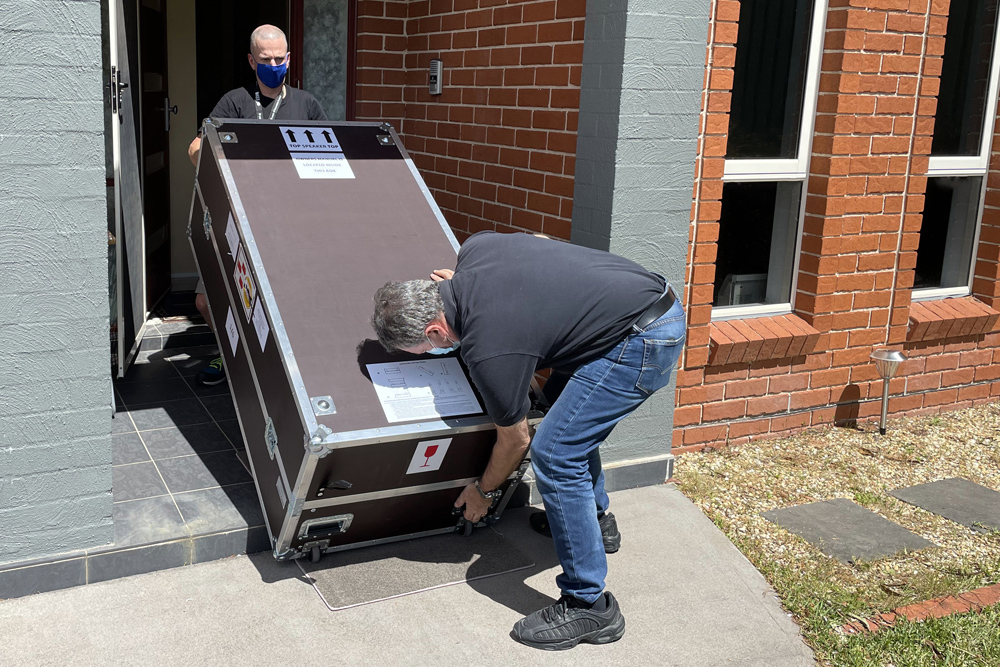 Importer Advance Audio Australia’s Bill & Sam flexing muscles
Importer Advance Audio Australia’s Bill & Sam flexing muscles
While somewhat of a contentious subject, break-in (or run-in, burn-in, etc.) was quite evident here – for the drivers’ suspension and the crossover components. To start-off the X Diamond Mk IIs sounded a tad too polite, spatially recessed and dynamically restricted. That changed quite remarkably over the first few hours of music-playing. Rightly or wrongly, it’s believed by many enthusiasts that ceramic drivers take unusually long break-in time. While I don’t see why this should be so, compared to any other driver type (suspension/spider systems are, by and large, the same as any other transducer), nevertheless, the change in performance was very noticeable, as I wrote above, after a few hours.
On the key specifications front, Estelon quote the frequency response as spanning between 20 Hz and 60 KHz (no parameters provided), with a sensitivity of 88dB at 2.83V and a nominal impedance of 6 ohms (minima of 3.5 ohms at 50 Hz). While the impedance is reasonably benign in terms of valve amplification (4 ohms tap likely needed), on paper, the sensitivity would require valve amplifiers of mid-to-high power. Having said that, an 18 watts 6L6GT-driven amplifier in for review at the time did a decent job of driving the speakers (and sounded spectacular through the mids and highs). However, bass control, power and overall dynamic expression were best achieved via our in-house Gryphon Audio Antileon EVO Class-A monster.
If I were to summarise the Estelon X Diamond Mk II in one word for its most evident quality it would be… refined. In my opinion, the X Diamond Mk II is the product of an expert engineering team and a well-evolved product ideology. Kudos too, to the voicing team for its fine-tuning prior to market launch.
I found great pleasure from the Francesco Trio’s profound musical skills interpreting Dvořák’s Trio in E Minor, OP. 90, ‘The Dumky’ and the X Diamond’s handling of the subtle beauty of the violin, cello and piano. The tonal qualities of these non-electrified instruments was pure, accurate and with sharp, clear delineation. Yes, the tweeter is lively, but in such a controlled, such an expertly-balanced way that it allows all the detail to be communicated without sounding lop-sided or standing-out as aggressive. Please, don’t ever confuse lively with aggressive in the context of the X Diamond Mk II.
The dual – but never duelling – pianos of Two For Piano’s Sandra Schene and Claudia Schneider on America (Gershwin, Gould, Bolling) scaled the heights of tonality (again), dynamic expression and ambience retrieval in a way that only the most distinguished of transducers are capable of. There was flawless, unclouded, unadulterated detail to each note, especially at the leading edge, while the decay petering away within the ambient space was truly mesmerising. In fact, the presentation of detail was, frankly, a feature that stood-out due to its efficacy with the complete absence of etch. Again, that intelligent balance of musical information and complete control over overt exuberance.
As quirky at 2CELLOS is (an abomination some purists may argue) there’s no denying the instrument-handling skills of Stefan Hauser and Luka Šulić. The duo’s interpretations of classic popular culture songs presents them in a new way to two different audiences (I’m all for cross-appreciation). What’s more, in terms of production quality, their self-titled album’s “Hurt” (a dark mood-piece by Nine Inch Nails) beautifully captures the energy and simultaneous subtlety the cellists can muster. Via the X Diamond Mk IIs the complexities of technique, of bow and string treatment and of each player’s exposition of the music are all enacted with unwavering intent. As the music deserves.

The X Diamond Mk IIs soundstaging and imaging powers are sublime. Width and height are, as you’d expect from a speaker bearing that cabinet architecture, beyond reproach. The sonic picture is wide-format – it stretches across the room and with realistic height. Musicians and vocalists are placed accurately within this panoramic presentation. Of particular excellence is the depth perspective. The speakers have an ever-so-subtle laid-back midrange presentation which actually results in some of the deepest instrument localisations I’ve experienced in my room. This is a stunning result for live orchestral works where, for example, Richard Strauss’ Also Sprach Zarathustra (Fritz Reiner with the Chicago Symphony on Living Stereo) presented a close-your-eyes-and-your-in-the-concert-hall verisimilitude. Cue the orchestral works festival bonanza.
At the other end of the musical scale (and to me, just as exciting), the manic guitars and hoarse bar-room vocals on Sasquatch’s “Rational Woman” from Maneuvers played raucously loud and fast if not with the dynamic expression to equal my reference, but then that is at the leading edge in that respect. However, the snap of snare and speed of delivery was superb, as was the detail and tone of the track’s distorted guitar intro. Post-intro and into the track proper, the attack is visceral enough to thrill even if my reference scaled the electric guitar midrange a tad more forcefully.
Hey, that 11-incher can kick too. I was quite surprised at the level of depth, definition and sheer wallop this driver mustered. The title track on Tranceportation Vol.2 from Sonar with David Torn is one of my preferred toughness tests for challenging a woofer’s perfromance. A good woofer needs to be transient-quick while also dipping low in order to communicate the growl that underpins this track. The X Diamond Mk IIs went low, tight and quick without overhang while allowing all the clarity of the mids and highs to shine without being overwhelmed. Torn’s guitar cut through in relief with the ability to display its quickness and full resolution (ditto for Stephan Thelen’s and Bernhard Wagner’s guitar contributions on a number of tracks). I loved the toe-tapping tightness and sheer wallop of Victor Wooten’s bass athleticism on “U Can’t Hold No Groove” from his album A Show Of Hands 15. Indeed, the entire album, which can be a reference for virtuosic bass guitar playing, shone with stunning low-frequency nuance, attack and depth.
Universally, the clarity of male and female vocals was plain to hear via these speakers. I played an entire smorgasbord of sublime voices from Laura Marling and Cat Power to Doug McLeod and Jackson Browne and many others. All were immaculate, and clearly stood-out from the mixes while being placed just in line with the speaker plane. On many of these recordings, the interplay between the textural and detail qualities of the instruments – a subtle brush on the drums, a nail click-on-steel-string, sparse piano accents or a delicately-delivered backing vocal – were evidenced with peerless integration with the music. Vocal intonation, intelligibility and sheer transparency were on par with the very best. Like high-altitude mountain air. Pristine.
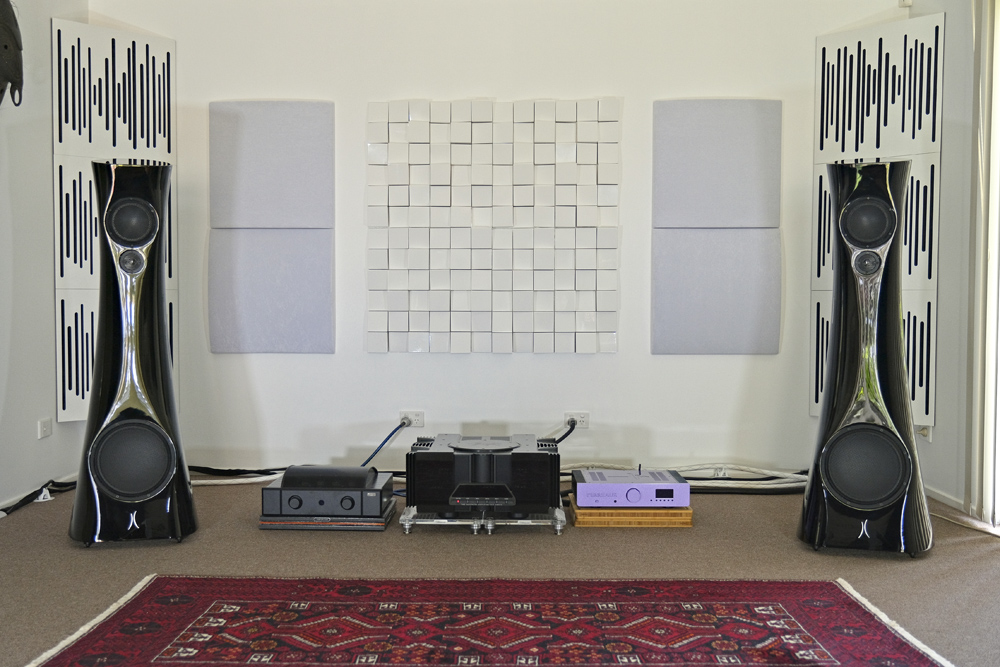
Conclusion
While in-situ over a few weeks, the X Diamond Mk IIs drew nothing but hearty opinions on its radical design when juxtaposed to your average rectangular box. A few notes into any music very quickly dissolved aesthetic views and led to intent listening… and collective appreciation. This was an acknowledgment of the indisputable virtues offered by a design bearing all the technical ingredients for sublime music-making.
The balance of a supremely inert enclosure shaped to function as an optimal driver platform and attract the eye, the exceptional driver quality and expert engineering has stemmed into a remarkable loudspeaker system at the highpoint of the voluminously limbed tree the high-end audio industry has matured into.
As far as loudspeaker design, the industry’s anatomy has been one of slow regeneration. Yet, for Estelon the ascendancy to the highest branches has been the result of an unusually swift germination. Yes, I see the tree jarringly swaying in the storm…
… Edgar Kramer
This email address is being protected from spambots. You need JavaScript enabled to view it.
Associated Equipment
- Speakers — Wilson Audio Alexia Series 2, Axis Loudspeakers VoiceBox S (nearfield monitor), Vermouth Audio Little Luccas Mk.II
- Amplifier — Gryphon Audio Antileon EVO
- Preamplifier — Supratek Cortese, Lightspeed Attenuator LDR passive, Totaldac d1-direct DAC
- Sources — Digital:432EVO High-End Music Server Roon Core, Yamaha CD-S2100 transport, Totaldac d1-direct DAC. Analogue: Transrotor Crescendo with Konstant Studio controller, Reed 1X Tonearm with upgraded internal wiring, Shelter Harmony cartridge, The Funk Firm Houdini cartridge decoupler, Supratek Cortese & REDGUM Audio RGPH2 phono stages
- Processor — DEQX PreMate
- Cables —PSC Audio custom design XLR, Vermouth Audio Reference loom,Vermouth Audio Black Pearl Mk.II loom
- Audio Rack — SGR Audio Statement Model V
- Acoustic Treatment — Vicoustic Multifuser Wood, Wavewood Ultra, Cinema Round Premium and Super Bass Extreme
- Miscellaneous — GigaWatt PF-1 EVO, Les Davis Audio Viscoelastic CLD discs, VRC Vinyl Record Cleaning systemplus miscellaneous accessories
Estelon X Diamond Mk II Loudspeakers
Price: AU$99,995
Warranty: Five Years
Australian Distributor: Advance Audio Australia
+61 2 9561 0799
www.advanceaudio.com.au
Estelon – Alfred & Partners OÜ
Kukermiidi 6 Tallinn 11216
Estonia
+372 661 0624
www.estelon.com







